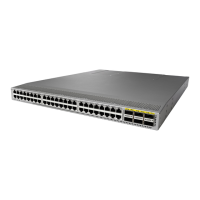CHAPTER 12
Configuring Embedded Event Manager
This chapter contains the following sections:
• About Embedded Event Manager, on page 119
• Embedded Event Manager Policies, on page 120
• Licensing Requirements for Embedded Event Manager, on page 122
• Prerequisites for Embedded Event Manager, on page 122
• Default Settings for Embedded Event Manager, on page 122
• Defining an Environment Variable, on page 122
• Defining a User Policy Using the CLI, on page 123
• Configuring Event Statements, on page 124
• Configuring Action Statements, on page 127
• Defining a Policy Using a VSH Script, on page 129
• Registering and Activating a VSH Script Policy, on page 129
• Overriding a System Policy, on page 130
• Configuring Syslog as an EEM Publisher, on page 131
About Embedded Event Manager
The ability to detect and handle critical events in the Cisco NX-OS system is important for high availability.
The Embedded Event Manager (EEM) provides a central, policy-driven framework to detect and handle events
in the system by monitoring events that occur on your device and taking action to recover or troubleshoot
these events, based on your configuration..
EEM consists of three major components:
Event statements
Events to monitor from another Cisco NX-OS component that may require some action, workaround,
or notification.
Action statements
An action that EEM can take, such as sending an e-mail or disabling an interface, to recover from an
event.
Policies
An event paired with one or more actions to troubleshoot or recover from the event.
Cisco Nexus 3548 Switch NX-OS System Management Configuration Guide, Release 7.x
119

